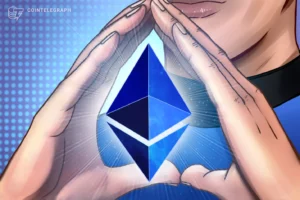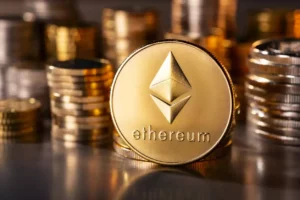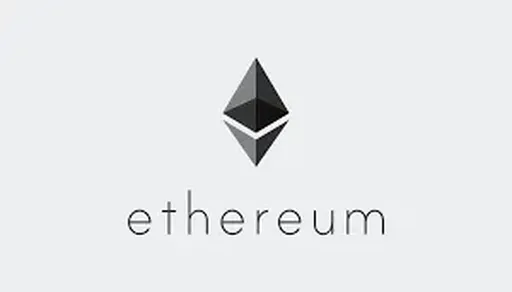- It allows users to create and exchange non-fungible tokens.
- It lets businesses create numerous tokens at a very cheap cost with the ERC-20 standard.
- It enhances the ability and features of cryptocurrency tokens with so many token standards.
For the uninitiated, Ethereum is the second biggest cryptocurrency that runs on a decentralized blockchain network. After Bitcoin, it is the next biggest contender in terms of market capitalization. It has so many attributes that make it one of the adaptable crypto assets right now. Besides being a high-value digital coin, it is known for a number of advantages.
Ethereum has enabled many emerging businesses to cease their dependency on traditional fund-raising activities. It gives them the ability to develop many other blockchain-based solutions that support the ambitious endeavors of organizations. And thus, reading its history is a must for everyone who wants to plunge deeper into the world of crypto.
A Sneak Peek into the Making of Ethereum

In 2013, a programmer named Vitalik Buterin conceived the concept of Ethereum and introduced it through a white paper. The others who joined this venture with him are Joseph Lubin, Anthony Di Lorio, Charles Hoskinson, and Gavin Woods. In 2014, development work and crowdfunding began. On 30 July 2015, the network became available to the public. The USP of Ethereum was that it allowed anyone to use immutable decentralized applications in its network.
It provided decentralized financial instruments that did not depend on banks, exchanges, or brokerages for execution. Initially, Buterin called it the Colored Coins project and worked with eToro CEO Yoni Assia for that. It proposed the association of real-world assets like stock and property with blockchain. However, it failed to gain traction and forced him to turn it into a scripting language. Eventually, this Turing complete programming language emerged as Ethereum.
The formal development of Ethereum was done by a Swiss company called Ethereum Switzerland GmbH—the integration of executable smart contracts into the blockchain by the then Chief Technology Officer, Gavin Wood. At the same time, an Ethereum Yellow Paper was introduced, and it mentioned Ethereum Virtual Machine. Simultaneously, Ethereum Foundation emerged, which is a non-profit organization that works towards the betterment of the network.
Significant Developments in the Pre and Post-launch period

Between the period of 2014 to 2015, various prototypes of Ethereum were developed. They all worked on the proof-of-concept consensus mechanism, which recently got changed into proof-of-work on 15 September 2022. This upgrade was called “the Merge,” and it reduced the energy consumption by 99%. The last prototype and the public beta pre-release was named Olympic.
Buterin advocated the incorporation of other applications into blockchain for a more robust structure. In a bid to do that, he had to associate with many people, which led to the ballooning of the list of founders. The story of choosing the name is also quite interesting. Buterin had gone through a searching spree on science fiction on Wikipedia, and he finally came across the word “Ether”. It is referred to as a hypothetical medium that allows light to travel and roam through the universe.
In the years 2016, a new platform was developed and launched. It was called the Decentralized Autonomous Organization (DAO), which was a set of multiple smart contracts combined into one. Upon the launch, it raised a whopping US$150 million in crowd sales. However, the platform was compromised in the same year, and tokens worth US$50 million were stolen.
Later Developments & Achievements

The theft incident drew a lot of flak from the crypto community. As a result, Ethereum was divided into two blockchains, the Ethereum and the Ethereum Classic. In 2017, many blockchain startups, research groups, and Fortune 500 companies came together to form an alliance called Enterprise Ethereum Alliance. It included giants from the technology and finance domain like Cisco, MasterCard, Intel, J.P. Morgan, Deloitte, Accenture, etc.
New Upgrades & Industry Applications

With the launch of Ethereum 2.0 (switch from POC to POW), the network makes itself a more eco-friendly option. It also optimized its writing in high-level programming source codes and incorporated many other languages. Today, it has become the go-to means to create non-fungible tokens (NFTs) that have redefined the buying and selling of all types of artistic works.
The Ethereum-based DeFi applications have found their place in many industrial applications. They are being used to create new-age payment networks that would change the way we deal with our money. And if we talk about performance, the network is slowly raising its capacity of transactions per second.
Conclusion
Ethereum has every promising aspect that makes it the preferred choice for all types of crypto-based dealings. It is not only expanding its scalability but also beefing up its security. It very well protects the privacy of the parties involved and makes the payments safer than ever. With the frequent pace of upgrades and positive responses from a corporate, Ethereum is cementing its reputation as the best option for cryptocurrency.




